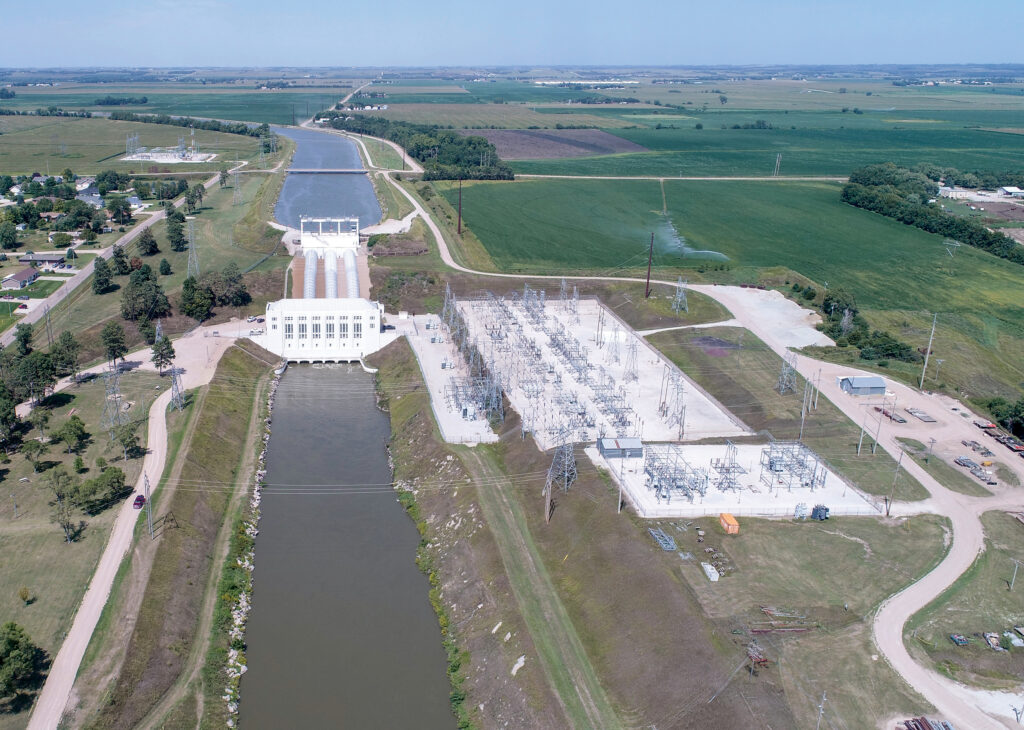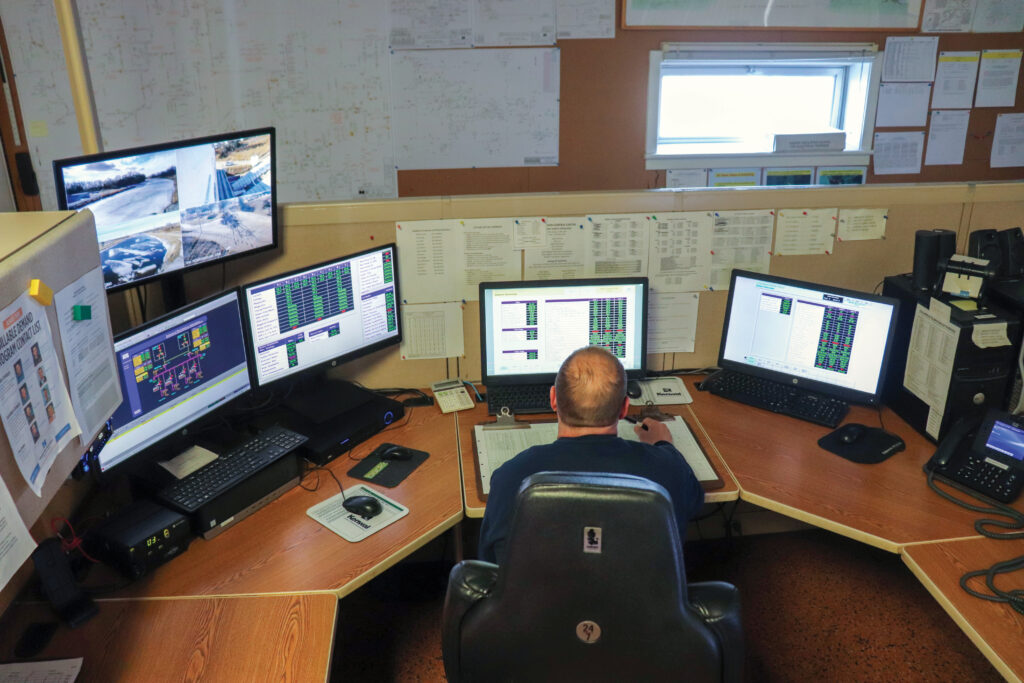
A calculated risk.
That might be the best way to describe what happens inside the Columbus Powerhouse every day.
Because even though the Plant Operators are constantly monitoring the water levels in the canal, the river, and the lakes, there’s no way to know for certain what the energy market and Mother Nature will do.
“We need to generate at peak levels when the pricing is best,” said Plant Operator Craig Baxa.
But how exactly do Loup’s Plant Operators accomplish this task?
At the beginning of each 12-hour shift, the incoming plant operator gets a rundown of what happened overnight or during the day including storm reports and power outages.
The operator then checks water level gauges on several rivers, including the Middle Loup and North Loup near St. Paul. He also checks in with employees at the Genoa Headworks to see what the river looks like at the canal intake.
The operators receive a six-day energy outlook every day. These forecasts are based on historical demand as well as factors like temperature, wind speed, and precipitation.
That forecast estimates the wholesale market price per megawatt hour every hour for those six days based on expected generation and demand.
“Having the information of the upstream water flows paired with the information of the day-ahead pricing forecast allows us to start preparing a generation plan.”
Craig Baxa
That pricing forecast updates each morning for the next six days. This allows operators time to ensure that regulating reservoirs Lake North and Lake Babcock are full so they can generate at a higher level when prices are high.

After the operator decides how much electricity Loup will generate each hour for the next day, it is bid into the Southwest Power Pool’s wholesale energy market.
Nebraska Public Power District, Loup’s wholesale energy provider, provides this service out of its Doniphan Control Center.
While the forecast is generally accurate, the real-time energy market can still change every minute. Because prices are so volatile, there are times where Loup generates electricity into a negative market and loses money.
Loup must put the promised amount of electricity onto SPP’s grid. If conditions change and Loup cannot meet that promise, we must buy it back at the real-time price.
Another hurdle to generation planning is compliance with Loup’s license from the Federal Energy Regulatory Commission.
License restrictions state that Loup must ensure minimum water flows in the bypass reach (the portion of the Loup River from the diversion weir to its meeting with the Platte River). The District is also limited to a maximum diversion of 2,000 cubic feet per second from March 1 to June 7.
But the operators’ duties don’t end there. The Columbus Powerhouse serves as an after-hours call center. Operators reconnect customers, take payments, answer outage calls and dispatch line technicians to those outages.
They also monitor Loup’s substations and their security with the Supervisory Control and Data Acquisition (SCADA) system.
Loup’s five Powerhouse Operators —Baxa, Jamie Held, Blane Konwinski, Justin Kohl, and Tony Miller — handled all these duties with success last year.
Prior to 2022, Loup sold its energy generation to NPPD and was paid for each kilowatt hour based on a formula tied to the average cost of NPPD’s generating facilities.
In their first year navigating the SPP market, the operators beat the generation revenue forecast by nearly $1.5 million and did so with less water than the previous year.
But the operators are quick to point out that the success is due in large part to their fellow employees at the Headworks and those on the canal crew.
Headworks employees operate the intake gates, diverting as much water as possible based on river conditions and license restrictions. They, too, constantly monitor the water levels and alert the operators to any changes.
The canal crew employees help maintain the canal system, ensuring that everything is working properly.
And together, they made certain that their calculated risk paid off.
LEARN MORE about the Southwest Power Pool
DOWNLOAD the Generator Magazine featuring this story.

